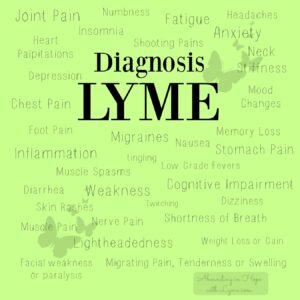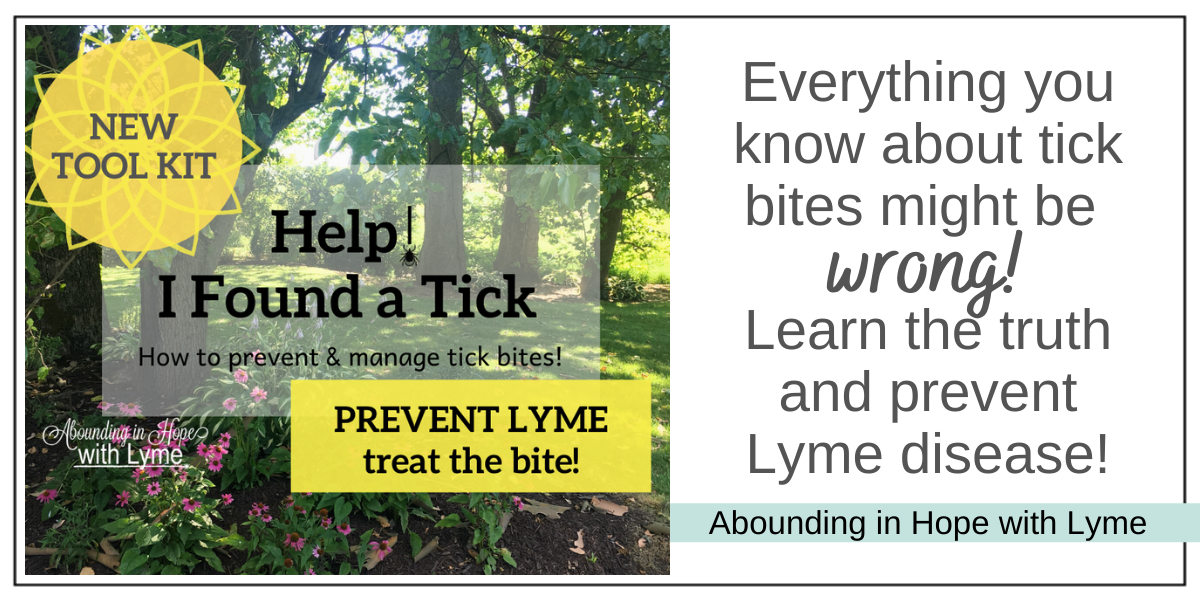You may have never heard this before but did you know that a little tiny tick can change your entire personality?
Ticks can transmit the bacteria that causes Lyme disease. They also transmit many other bacteria, parasites, viruses and other pathogens. I had never heard or read anything about this and when my youngest daughter began having psychological symptoms we didn’t immediately think Lyme. When she was 7 years old her behavior and personality began to change and she became controlled by anxiety and OCD. She had facial tics and made pinching motions with her fingers that later progressed to clenching her hands into fists so tightly that her knuckles would turn white.
The Psychological Effects of Lyme Disease

No claims are made as to how our treatment protocol may or may not help you individually or whether or not it would be useful for your unique health condition. This blog post is not intended to be an endorsement of any specific product or treatment but rather a source of information for your own personal research.
The Slow Progression of Infection
After her dad had an emergency appendectomy she became terrified that she too was going to need surgery. I took her to the pediatrician twice just to give her the peace of mind that she wasn’t having an appendicitis. The pediatrician examined her and told her that if she could jump on one foot she was not having an appendicitis. Naturally, she began jumping on one foot, constantly. This became the way she moved through the house.
After a few weeks, she added hand washing to her obsessions. She would scrub her hands until they bled, it was difficult to keep her out of the bathroom. She pooled saliva in her mouth and wouldn’t swallow because she didn’t want the germs going down her throat.
I tried telling her that she was fine, I told her she wasn’t going to get sick and that this was the way God designed our bodies to work. I purchased a safe, essential oils based hand sanitizer as an alternative to unnecessary hand washing. Over the years her obsessions changed, her fears changed and symptoms changed, they intensified in severity and eventually became paralyzing.
My easy going daughter became very angry, very aggressive and resistant to everything. She was completely out of control and at times I had no idea how to interact with her and I certainly didn’t know how to help her.
It was difficult to discern whether or not she was just being rebellious because when we went out to church, co-op or other group settings she behaved well. She told me that she had to work very hard to hold it all in just to appear normal and when we returned home she would let it all out. I tried to pay attention and began to notice her struggle when others may not have.
As time went on she refused to do her school work, refused to clean her room and refused to comply with even the smallest thing I asked of her. She would always reply with the phrase “I can’t”. Eventually, she would “get stuck” and couldn’t move until someone in the house said the magic word which also changed with time.
Pursuing Help
I knew something wasn’t right and her behavior became exhausting for her and me. We made many trips to our pediatrician who, each time, did a thorough physical evaluation. Initially, she ran a small amount of blood work but she didn’t feel anything else should be pursued and she sent me home with a list of books to read about how I could better parent, my child.
Could it be Lyme?
About two years after her initial symptoms I found out that I had chronic Lyme disease. As I was reading about Lyme I discovered that all of her symptoms are also symptoms of Lyme disease and other tick-borne diseases, particularly Bartonella. Later we discovered they were also symptoms of Babesia.
I pursued Lyme testing for my daughter but her labs always came out negative. I learned that blood tests are often inaccurate so I took her at least 3 more times within a 6 month period to have her blood tested but each time she was negative. My doctor assured me that she couldn’t have Lyme even though she had a history of tick bites and a strange rash after one of the bites. I was told that because she didn’t have a bulls-eye or fever that her symptoms were unrelated.
We saved the money to take our daughter to the Lyme Literate MD (LLMD) that I was seeing and we tested her through MDL labs in New Jersey where she tested positive for several bands that were indicative of Lyme disease.

She was not CDC positive but according to the CDC Lyme must be a clinical diagnosis and so with these positive bands and the list of symptoms my doctor began treatment. My LLMD informed me that her symptoms were classic for Bartonella so we began treatment for that as well.
Lyme Treatment
Over the course of 4 years, she was treated with different combinations of antibiotics, all very high doses as well as with antimalarials for the Babesia infection. In the very beginning, she had a lot of side effects from the high doses of medications. My sweet girl became afraid to leave the house and terrified for me to leave her. She would stand at the door, blocking my way, with panic in her eyes and she would grip my arm as hard as she could in an effort to not let me leave.
This was such a heartbreaking and stressful time for me. I took her with me almost everywhere I went but there were times I couldn’t and then there were those times I needed a break from her.
Sometimes I would have to physically move her so that I could get out the door while she stood there screaming and scared. I felt like the worse mother alive. The guilt sometimes overwhelmed me.
She slept on the floor in my room for over 2 years. Some nights I would wake to find her pacing around my bed with wide, scared eyes. She was terrified of thunderstorms and was certain we would be killed by a tornado even if there weren’t any warnings.
During treatment, we recognized that certain combinations of antibiotics were helpful for a time and would give her a break from these crippling symptoms but it wouldn’t last for more than a few months, sometimes for only a few weeks and her symptoms would return with a vengeance. I was so desperate to help my little girl and she was quickly approaching puberty so I knew I needed to find something that could help her before she entered that already difficult time.
Babesia Infection
By the time she was 12 her symptoms grew worse but they did fluctuate depending on which combination of medications she was on. Certain meds made her OCD and anxiety worse while other meds made her rage worse.
In February of 2013, we were all sent to the lab for bloodwork to test for Babesia Microti and Babesia WA-1 Duncani. Our tests came back positive for Babesia WA-1 Duncani, including my daughter. Babesia is a parasite that affects the red blood cells and is very similar to Malaria. It’s important to note that this strain is thought to only be contracted on the West Coast only but it is prevalent on the East Coast.
Clongen Labs did a tick sweep not too far from our hometown and found that half the ticks collected carried Babesia but not Lyme. The majority of ticks found were the lone star tick and not the expected black-legged deer tick. You can read more about that here Ticks Found In Quince Orchard Test
When my daughter began the anti-malarial medication we noticed a big difference in the beginning but soon her symptoms began to worsen. Some days she would be curled up in the fetal position right in the middle of the floor and we often had to walk over her in order to get through the room. She would stay there until she finally allowed me to help her over to the couch or up to her room.
Desperation
I became her full-time caretaker from the moment her eyes opened in the morning until she would finally fall asleep in the middle of the night. Even our nights were often interrupted by panic attacks. I was desperate to help my daughter. I felt like the medication was only making her worse. I continued to scour the Internet for something that would help. I called other Lyme friends, consulted doctors and prayed like crazy.
Next time I’ll share more of our journey as well as very helpful links, supplements that helped my daughter and I’ll introduce you to a nutritionist who provided help and direction without even knowing it.
Read Part 2 Using Supplements to Nourish the Brain
*** At the time of this posting it’s been almost 2 years since we stopped antibiotic treatment, my daughter is now 15 and has been doing great.




Leave a Reply